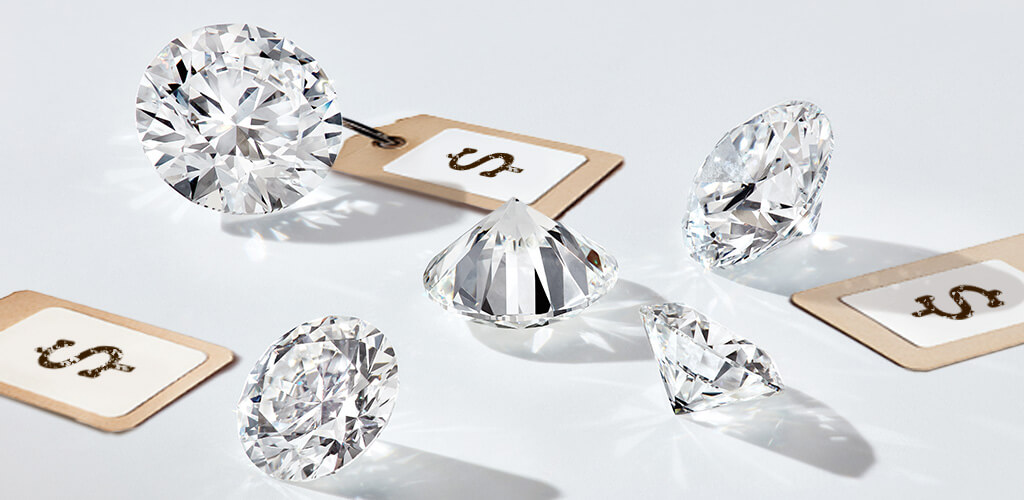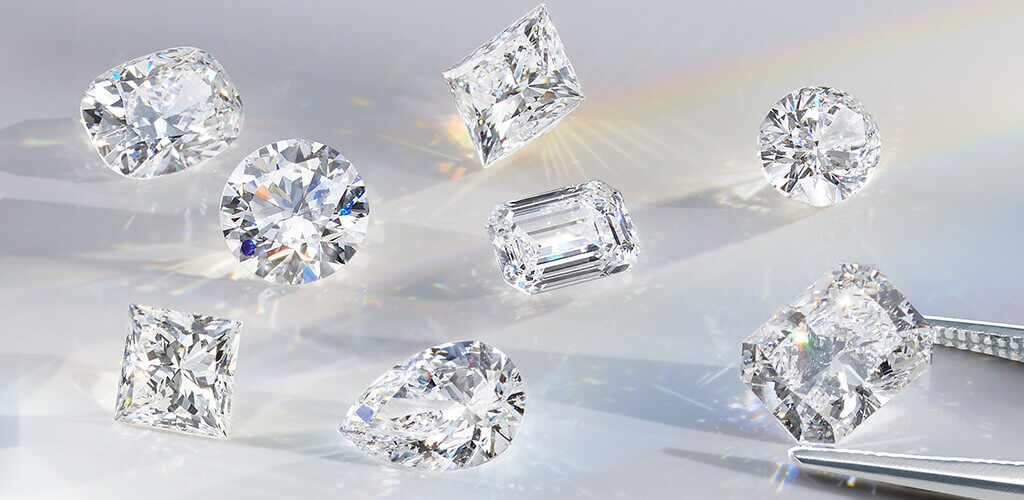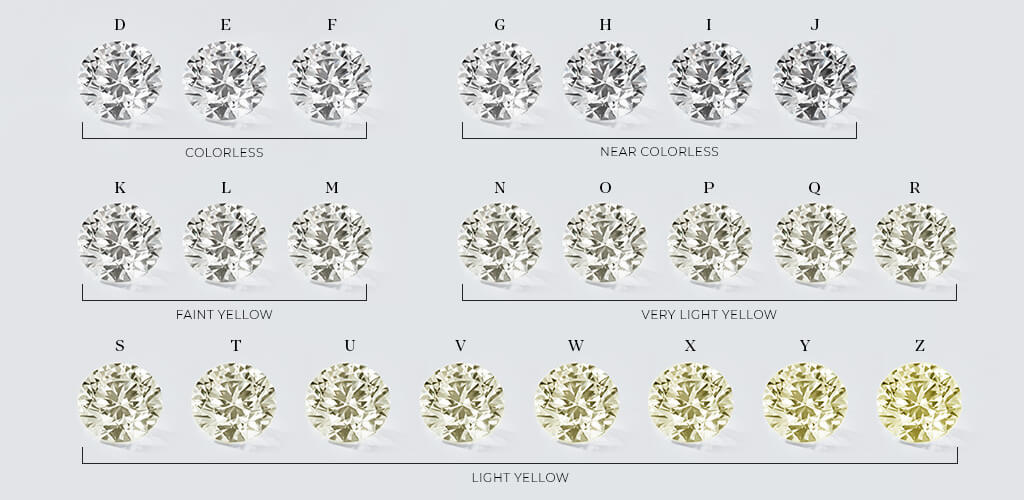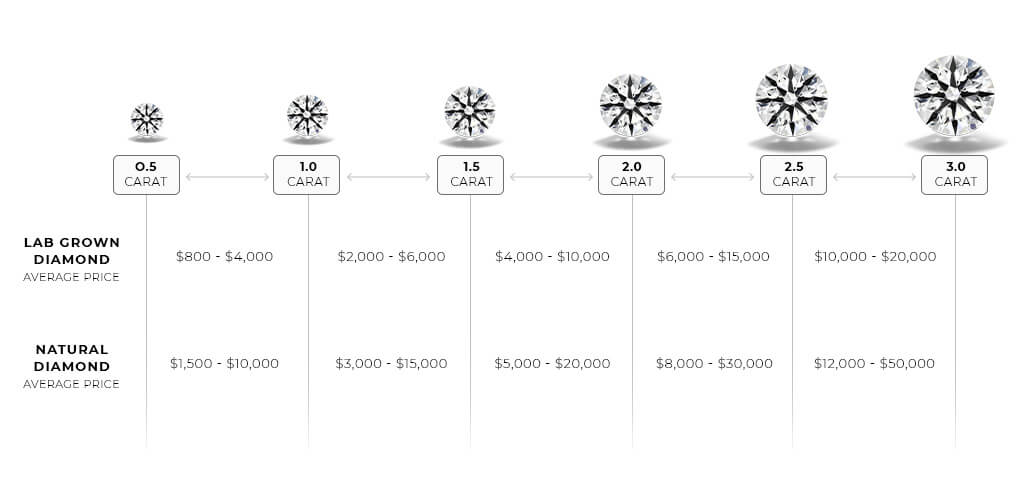
Understanding what factors influence diamond price is so important to know before you make an investment or purchase. We know it’s not an easy decision, and so we’ve created this guide to help you understand the key elements of buying diamonds along with helpful tips to make your journey as simple as possible.
Not all diamonds are created equal. There are ideal features you should know to look out for and certain characteristics you want to avoid. Get your notepad ready and let’s start getting into buying diamonds 101.
Naturally, the bigger the carat the higher the cost. But it’s important to remember the following things when trying to save money on a larger diamond:
Diamond cut is graded from poor to excellent- most folks will aim for a “very good” cut grade. The cut of the diamond impacts the price because the cut essentially influences every other aspect (the 4Cs) of a diamond’s overall grading.
The better the cut grade the higher the price. Our experts suggest that you never compromise on cut. Even a lower color, carat, and clarity grade diamond will still sparkle with brilliance and luster if the cut grade is high.

A diamond’s clarity is determined by its internal and external imperfections. There are diamonds with more imperfections than others, and even some that are flawless. Larger imperfections lower the price of a diamond, whereas fewer to no imperfections cause the price and value of the diamond to rise.
But don’t be afraid of the word imperfections or blemishes. These flaws are usually not obvious to the naked eye and can only be seen under microscopes or a jeweler’s loupe.
Remember the clarity grades:
Generally, diamonds in the Very Slightly Included (VS) and Slightly Included (SI) categories tend to offer good value for money.
The color grade of a diamond significantly affects its cost. Diamond color is graded on a scale from D (colorless) to Z (light yellow or brown), with D being the most valuable.
The more colorless a diamond appears, the higher its value. Near colorless diamonds are also popular and offer a good balance between quality and cost. Lower-grade diamonds are generally more affordable, but the choice between color grades depends on personal preferences and the desired balance between diamond quality and budget constraints.

Now the hard part – how do you buy the diamond of your dreams (or one close to that) for the right price. First, there are some things you should decide on before you go about choosing your diamond.
It’ll be easier to know what type of diamond you want and how much you’re willing to spend once you have a better understanding of the above preferences. Our experts suggest that you mention this to a diamond consultant/jewelry before you look at diamonds.
P.S.: Did you know that JamesAllen.com offers free real-time diamond inspections and consultations?
This next step is key. Having a budget in mind makes it that much easier to understand what diamond price you’ll be happy with. It will also help the jeweler find you the best diamond for your budget and your or your partner’s preferences.
On average – a basic diamond engagement ring costs anywhere from $1500-$4000. Check out our TikTok page to see just how to create your ideal engagement ring on a budget!

Think of your diamond certification as its very own birth certificate. Getting the proper diamond certification is essential, not only to know that you’ve purchased a real and conflict-free diamond but also in case of resale and insurance.
Many organizations offer different diamond certificates but some of the most recognizable and popular are GIA (Gemological Institute of America), IGI (International Gemological Institute), AGS (American Gem Society Laboratories), and European Gemological Institute.)
Never purchase a diamond that doesn’t come with a reputable diamond certification.

If you’re going to a jeweler and have the opportunity to buy your diamond straight from the market try these negotiating tips:
Research Rapaport Prices: Read the weekly Rapaport Diamond Report to understand average wholesale prices for diamonds.
Compare Multiple Quotes: Get quotes from different jewelers and compare them to Rapaport values for similar diamonds and use this information as a negotiation tool.
Use the 4Cs Strategically: Leverage your knowledge of the 4Cs to negotiate your diamond price.
Ask About Diamond Characteristics: Inquire about specific diamond features and negotiate based on any imperfections or characteristics that may affect its value.
Build a Positive Relationship: Establish a good relationship with the jeweler, that way they will want to give you the best diamond price possible.
Be Prepared to Walk Away: Be willing to walk away if negotiations don’t meet your expectations.
We have this guide that has answered some of your diamond-buying questions, or at least opened your eyes to the topic of diamond price and how to buy them! If you’re still unsure and want to chat with a professional – take full advantage of our 24/7 diamond consultants at JamesAllen.com today!
The 4Cs affect the price of a diamond – carat weight, clarity, color, and cut. So make sure you research these before buying your diamond.
The average price of a diamond per carat depends on several factors. Check out our detailed diamond price comparison chart above!
Of course! Most online diamond retailers offer lab grown diamonds and natural diamonds at affordable prices (and oftentimes these diamonds are on sale several times throughout the year.)
Do your research- compare diamond prices at different jewelers- online and in-store.